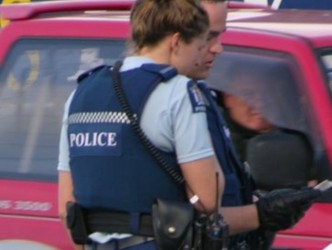Drink Driving In Perspective
You can get the impression the roads are full of drunk drivers.
This helps put it in perspective.
Over 38,000 motorists were breath-tested throughout New Zealand at the weekend .
- In total 38,132 breath tests were carried out.
- 178 drink-drive offences detected.
- One motorist tested positive for drugs.
- In addition, 75 drivers had their licences suspended.
- 877 other traffic offence notices were issued.
- 42 other crime offences were detected.
 “It’s good to see so many New Zealanders caring about themselves and others and acting responsibly,” said Superintendent Paula Rose, National Road Policing Manager.
“It’s good to see so many New Zealanders caring about themselves and others and acting responsibly,” said Superintendent Paula Rose, National Road Policing Manager.
Indeed. Most of us are law abiding responsible citizens.











6 Comments
That is interest and it just goes to show you how invasive random breath testing.
Is random breath testing just a revenue collector? or is it really stopping people from drink driving.
I think it is a revenue collection exercise
Here you have a statistically-significant sample size from which to deduce that drivers who’re under the influence are somewhere fewer than 1% of drivers on the road (in this case, 0.45%). It does vary, and I have seen some CBT blitzes returning ~1%, but it’s still generally a low rate. However DUI is a factor in at least a third of fatal car crashes. So being drunk is very disproportionately risky behaviour when driving.
So damian, with that in mind, do you still find CBT to be objectionable? It takes 20 seconds out of your life, and may well save it if it gets a habitual DUI’er to get help. Note, also, that CBT often picks up a lot of other offences, including cars that shouldn’t be on the road.
doesn’t 1% show their targeting isn’t very good?
As I understand it, they get paid per stop for these and regestration etc by NZTA/ACC? And are contracted to do certain numbers.
And that is why they target popular routes that take the minimum time/effort for max numbers.
How many drunk accidents have there been in the CBD? how many deaths - while out on the country roads they do very little, as it doesn’t get the numbers required to meet the contracts.
Drunk driving is an issue in some locations at some times - but they don’t seem to target that.
they could argue that by targeting thousands of CBD/arterial road users they get the warning message out there - but does that really save lives? If those people are just going home from after a restaurant?
“I think it is a revenue collection exercise”
Nonsense. Like speeding, it is a VOLUNTARY TAX taken only from people who endanger others. Don’t drink and drive, don’t speed, and you are fully safe from this “revenue gathering”.
This revenue gathering talk is a disappointing attitude to our police. We have one of the least-corrupt law enforcement and bureaucracy systems of the world (proven over and over again), yet some otherwise normal people treat the police like an enemy who’s “out to get them”.
If I decided where the money goes, all the money that goes into “educating” drivers would go into hiring more police officers to smack down people breaking the rules. Sweden and other countries didn’t get their low road death rates by driving Volvos alone.
It would help Max if there was actually much chance that your drunk driver would get help.
In fact, only 7% of drunk drivers are referred for treatment for addiction/counselling and only 17% of repeat drink drivers.
I find that depressingly low…
Lucy, that’s not exactly the fault of the Police, and to give National a tiny bit of credit they will be mandating counselling for repeat offenders. Not quite as good as counselling for all drivers convicted of DUI, but a big improvement on what happens at present.